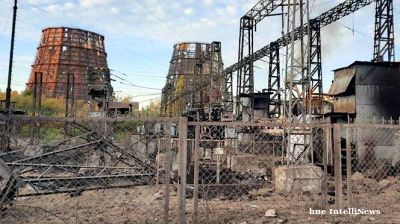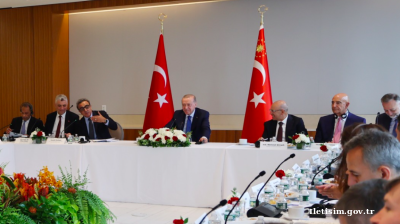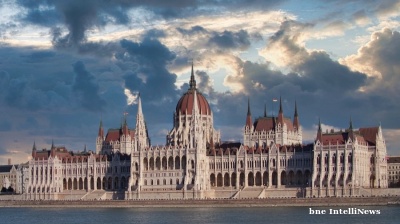After a near-miss debt crisis in 2015-16 Russia’s Ministry of Finance (MinFin) cracked down and introduced a “manual control” control system after several of Russia’s poorer regions nearly went bankrupt. The next few years saw the system put back on its feet. But since the start of the coronavirus (COVID-19) epidemic earlier this year many of the regions are being rocked by the shock of the extra spending needed to combat the virus, and a new debt crisis is looming.
Regional debt has always been a major headache for the Kremlin. While the federal government earns buckets of money from the export of oil, gas and metals, the regional governments on the whole have to rely exclusive on personal income and corporate profit taxes for their income.
At the same time, if the federal government needs to save money it can scale back military spending or play with the mineral extraction tax (MET) on raw materials to boost revenues, and it is currently doing exactly that to create more cash to deal with the corona-shock. Regions, on the other hand, have very little wiggle room, as 70% of their outgoings are on essential public services like schools, hospitals, road repairs and fire stations.
“In a normal year, most Russian regions do not have enough income to cover their budgetary expenses, given the centralisation of budget revenues in the past two decades. This means that they have to rely on federal budget transfers, borrowing, or, in most cases, both,” Andras Toth-Czifra said in a paper published by the Institute of Modern Russia entitled “Russia’s pre-existing conditions” that takes an in-depth look at the state of regional debt.
In the last crisis MinFin was forced to try to defuse a ticking time bomb of regional debt, which has been growing at an alarming rate between 2015 and 2016.
The federal government was also short of cash as it struggled to fill a RUB2 trillion ($26.2bn) hole in the budget for which it didn't have the money. MinFin cut back harshly on federal transfers to the regions from the centre and eventually only just managed to bail the budget out with the “privatisation” of a 19% stake of Rosneft that later turned out to be a loan from the UAE.
MinFin then imposed a “manual mode” system of control over regional debt and allocated three colours: red, yellow and green. Green regions were the vast majority, allowed to handle their own debt management; yellow regions had to check their plans with the ministry; and the ministry simply took over debt management completely in the half a dozen red regions. In the worst cases these regions' entire income would have to have been dedicated to debt service and they banned from borrowing completely.
As the pressure eased on the federal budget as an economic recovery got under way in 2017 and the ministry's own reforms started to pay off, implemented by the current prime minister, Mikhail Mishustin, who was head of the tax service then, the regions were switched from expensive bank loans to soft credits from the central government. But that also made them more dependent on the federal government too, says Toth-Czifra.
Net regional debt began to fall over next few years and debt servicing became manageable. Some regions even were able to amass some reserves. Regional finances also got the IT make over that was so effective at the tax service and, as bne IntelliNews reported, Russia’s leading software company IBS has been putting regional bookkeeping into the cloud to allow for much more efficient “just-in-time” financing of local budget expenses.

Pandemic shock
The arrival of the coronavirus in Russia has knocked this whole system off its feet again. Spending has soared as regions scramble to beef up healthcare facilities and at the same time try to offer subsidies and stimulus packages for the local economies. Even those regions that have managed to accumulate some reserves have found they do not have enough to fully absorb the corona-shock. Early this year, 37 regions only had reserves amounting to less than 5% of their income in 2019. All the regions are being forced to turn to the centre for help.
“Regions, on the whole, lost about 26% of their revenues in the first seven months of this year compared to the same period in 2019. Although regional revenues rebounded slightly in the summer, they can easily plunge again in the second wave of the pandemic,” Toth-Czifra says. “Oil- and gas-producing and processing hubs, such as the Yamal-Nenets Autonomous District, the Krasnoyarsk Territory, the Astrakhan Region, and the Komi Republic suffered a double whammy –pandemic and oil price decline – and lost up to half of their revenues in the second quarter.”
The situation has somewhat improved since, but federally mandated deferments of tax payments mean that revenues are still lagging significantly behind plans. Even wealthy regions like Tatarstan had to rely on state guarantees to cover healthcare expenses as the federal budget absorbed two-thirds of the republic’s tax revenues.
The federal government has transferred RUB2.13 trillion ($27.97bn) in the first eight months of the year to the regions, which is RUB697bn ($9.13bn) more than in the same period a year earlier.
“This includes at least RUB200bn ($2.62bn) of extra grants announced in April, with RUB100bn ($1.31bn) still to be transferred by the end of the year and RUB100bn next year,” says Toth-Czifra.
And the money has been unequally distributed, with the politically powerful regions taking more and the politically weak regions getting less than they need to meet their requirements, according to Toth-Czifra.
As part of the pandemic response the MinFin has eased the rules on commercial loans, but this has been capped: regions can double their debt to pay for pandemic responses by turning to the banks, but only to the limit of what they are allowed to borrow from the federal government. This gives the green regions a lot more firepower, but the red regions are not allowed to borrow anything at all and so have been left behind. Overall the total borrowing available to all Russian regions is effectively capped at RUB74bn ($970mn) – a small amount when compared to the size of the transfers already made from the centre during the first eight months of this year.
Ironically these rules also encourage regions to get into as much debt as they can, as that improves their ability borrow. The tiny Republic of Mordovia, for example, with a population of less than a million people, can borrow an extra RUB3.96bn ($51.8mn) in debt because it was already deeply indebted to the Ministry of Finance.
The Ministry is still working on the problem. As bne IntelliNews has reported, Russia’s tax system has already been through a drastic and highly success reform that has seen the price a barrel of oil needs to be for the federal budget to break even fall from $115 in 2008 to around $42 today. Scams have been closed down, every cash register in the country has been hooked up to the tax ministry’s IT system and IFRS9 accounting rules have been imposed on everyone. The tax reforms have now moved a new phase where the whole mineral extraction tax (MET) regime is being overhauled and new rules for oil, gas and metals have been passed by the Duma in just the last month that totally change the way these taxes are calculated and charged.
And how the regions are funded have also been caught up in the MinFin’s brio. In October, MinFin seemingly agreed to expand regions’ rights to use funds under budgetary loan agreements, says Toth-Czifra.
“Additional funds might be redirected from the National Projects – a series of Russia’s spending priorities in 13 policy areas – the deadline for which has been pushed back by six years to 2030 and will almost certainly be refocused on the healthcare system,” Toth-Czifra wrote. “But already some governors have indicated that these measures are still not going to be enough.”
Alexey Teksler, head of the Chelyabinsk Region, called for the removal of borrowing restrictions altogether. Alexander Tsybulsky of the Arkhangelsk Region, who in May tried (and failed) to solve his region’s financial problems by absorbing the Nenets Autonomous District, concurred, adding that his region had received only about a third of the support needed.
After bouncing back nicely over the summer the International Monetary Fund (IMF) recently improved Russia’s GDP outlook from a 6% contraction this year to only 4.4%. This was due to the strong recovery in consumption that lifted the economy. But everything started to go wrong again in the last week of September when the corona-infection rates surged and set fresh records for daily infections.
A lot will now depend on the severity of the second wave, but the Watcom shopping index that measures foot traffic in Moscow’s leading malls in real time is already showing that the retail turnover is already falling again. The other economic indicators tell a similar story. It could well be that the second wave of the epidemic is far worse than the first wave as the winter weather closes in. Then Russia’s regions will find it even harder to cope with a corona-shock than they did in the summer.
Features

Ambition, access and acceleration – Uzbekistan’s Startup Garage opens free academy for entrepreneurship
Aim is to train 50,000 young founders by 2030.

Ukraine’s growing energy crisis promises a cold and dark winter
Since the summer, Kyiv has changed tactics. Given the almost complete failure of Western oil sanctions to curb Russian oil exports, it has been targeting Russian oil refineries. The Kremlin has struck back, targeting Ukraine's power system.

Russia, China sign off on Northern Route shipping deal to slash global freight times
Russia and China have signed a landmark agreement to develop and commercialise the Northern Sea Route (NSR), after Beijing tested the route last month, that could slash Europe-Asia cargo transit times and challenge the primacy of the Suez Canal.

Sri Lanka’s economic escape
Sri Lanka’s recovery over the past year reads like a narrow escape rendered into a cautious, albeit unfinished success story.



